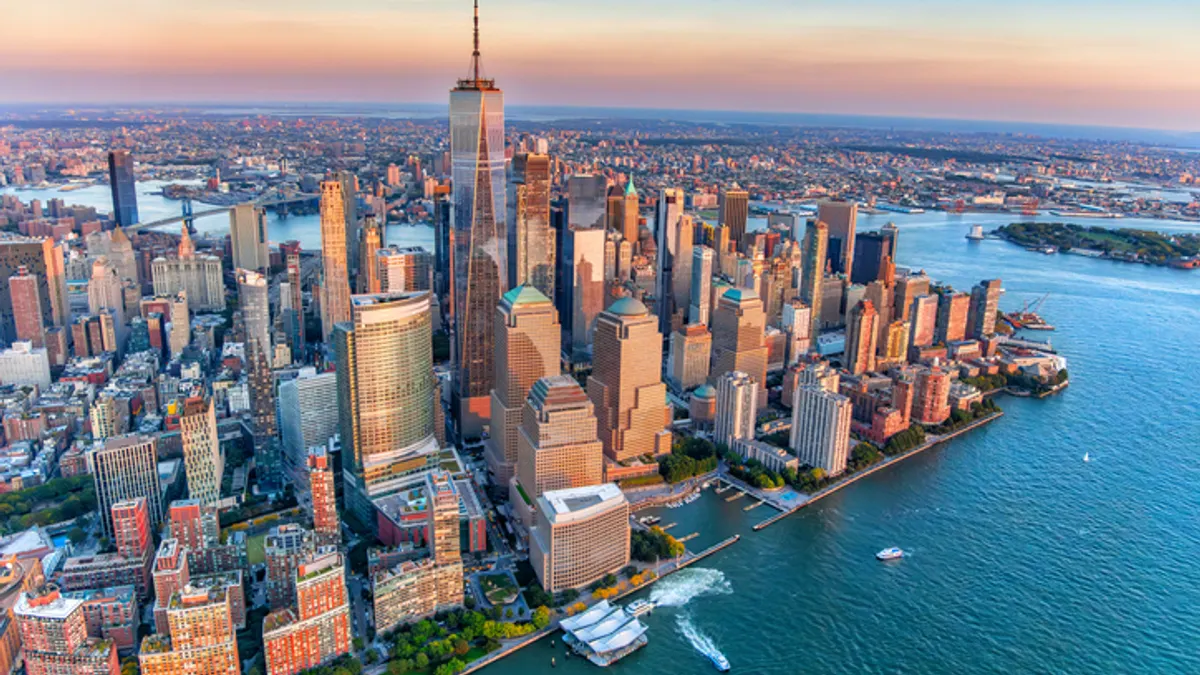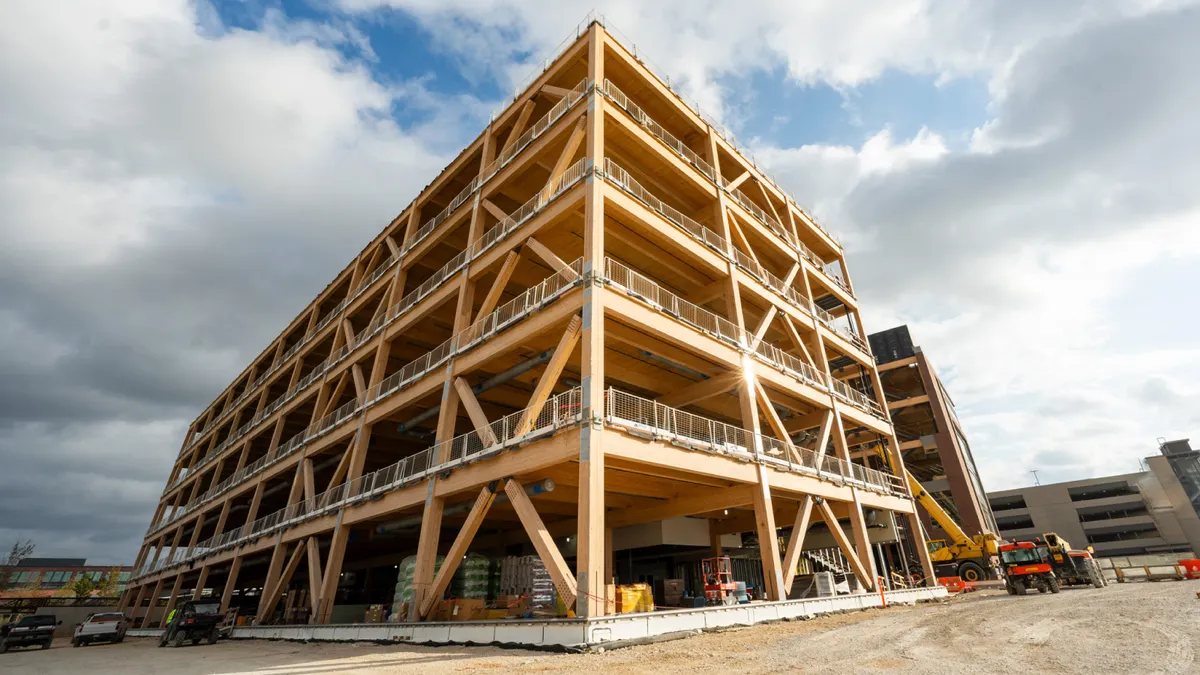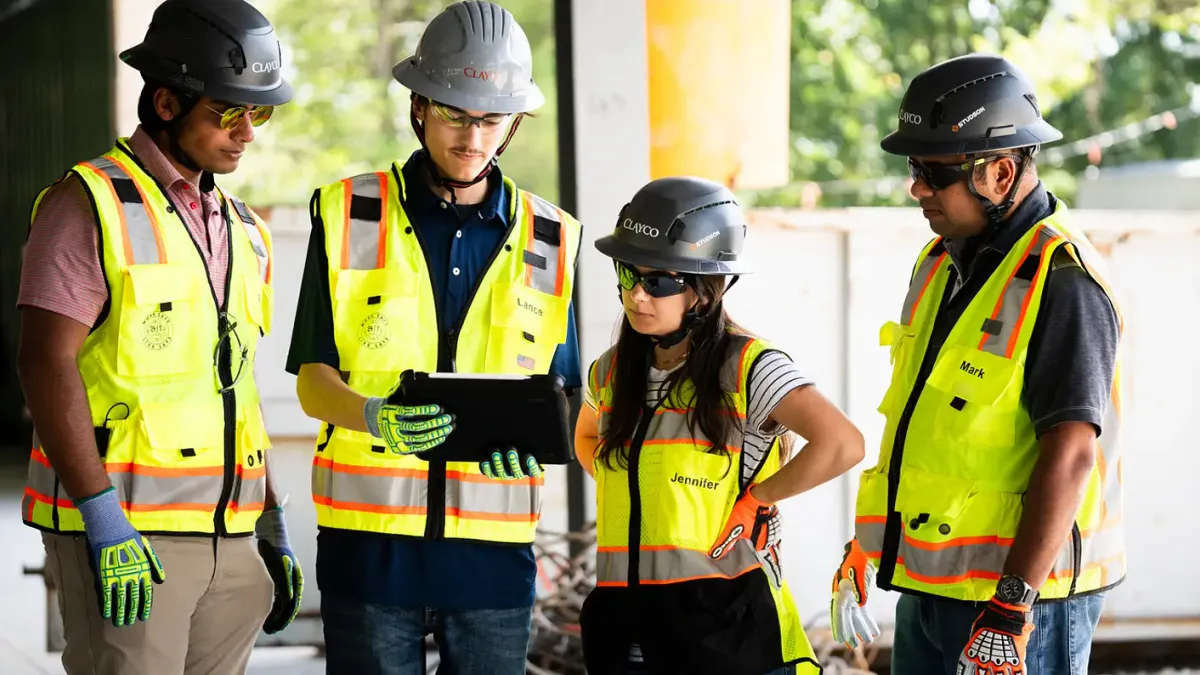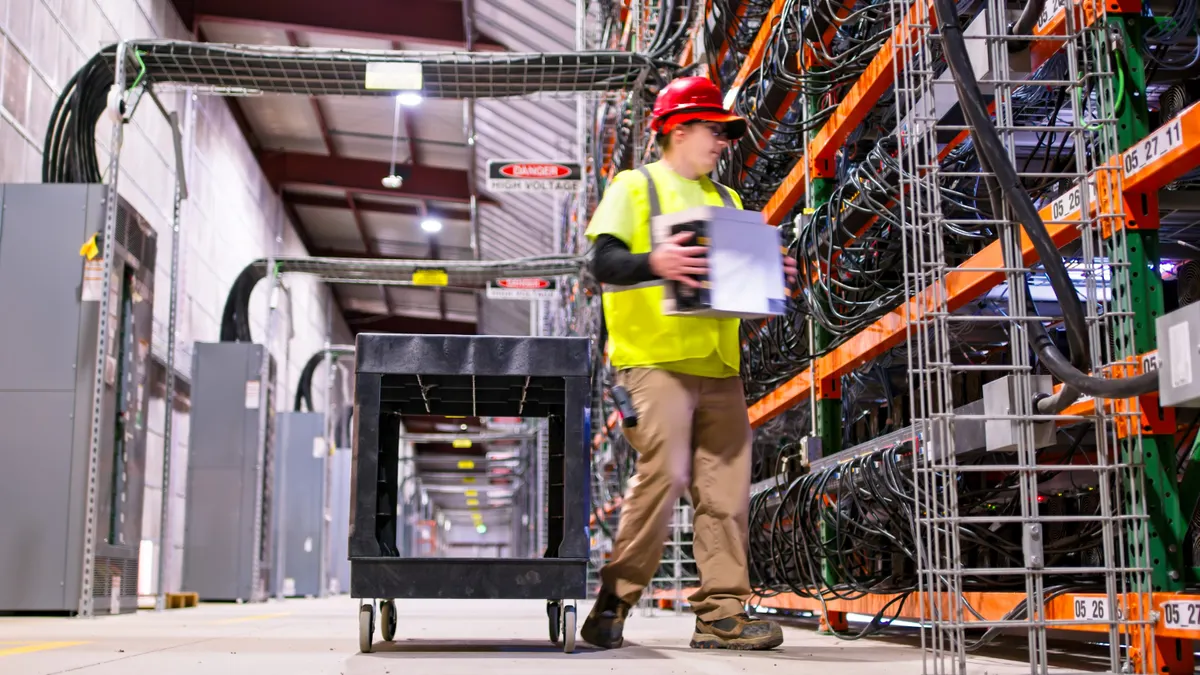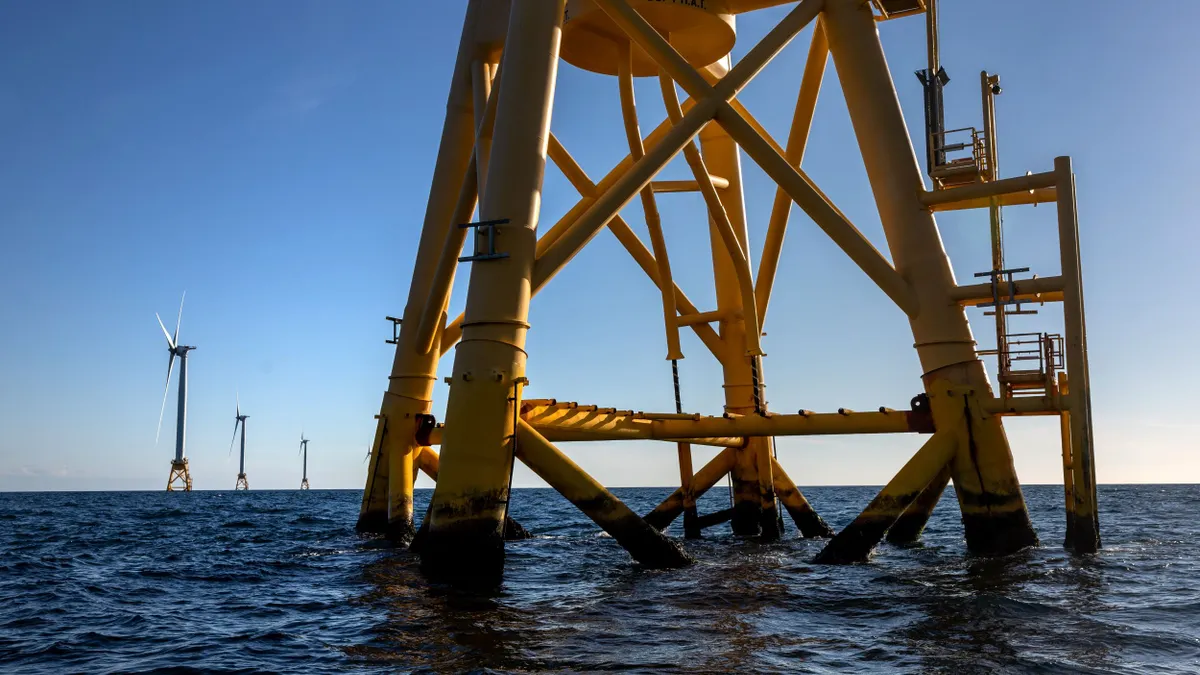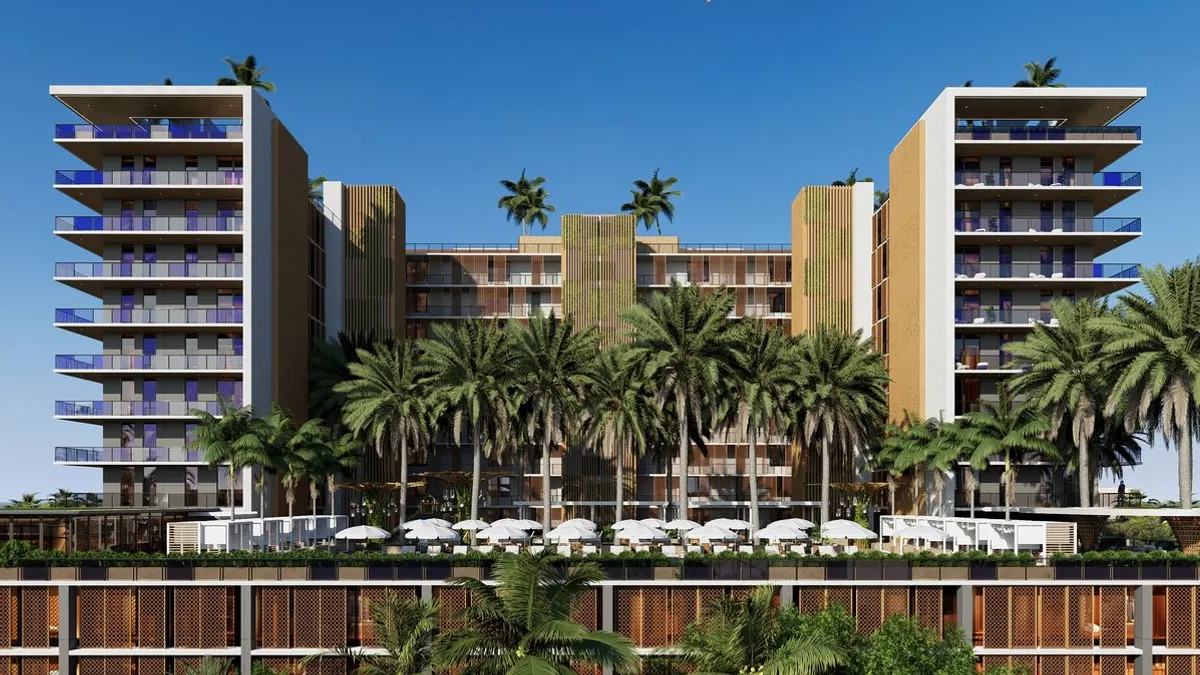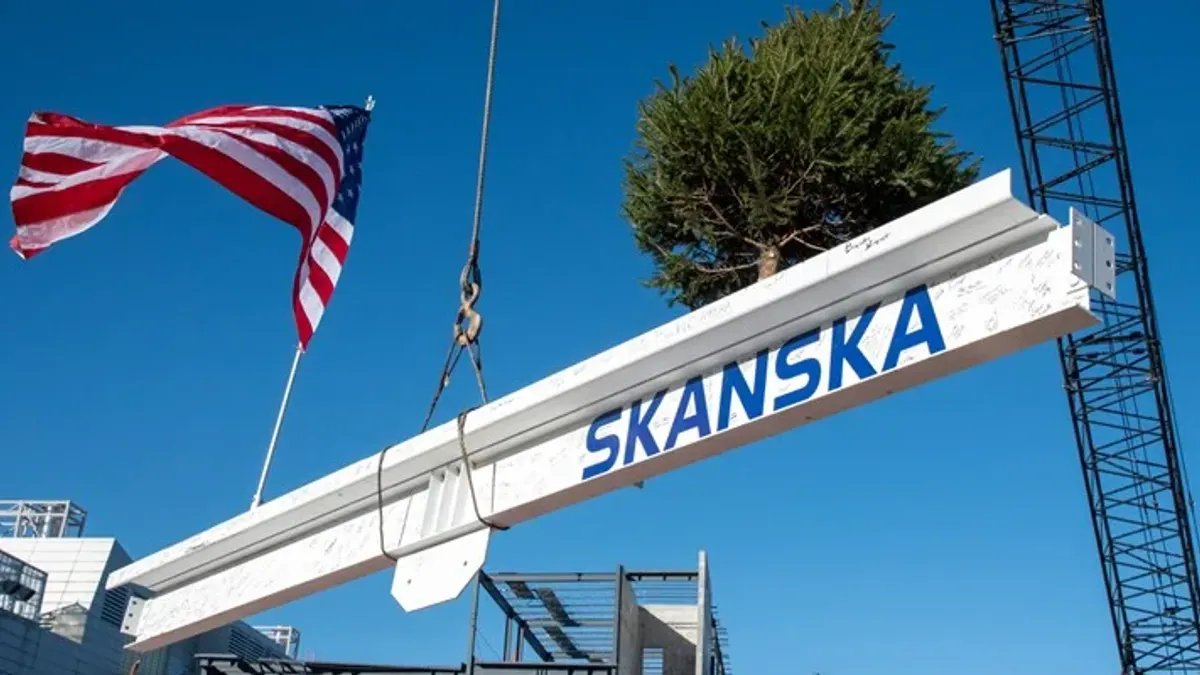This article is one in a series of conversations with women leaders in the construction industry. Click here for past discussions.
For much of her career, Alison Landry has been on the public side of civil work.
Following several years working for New York City, Landry left city hall in the spring and took time off with her family. Then, in September, she joined Jacobs as the Dallas-based contractor’s New York City lead, managing infrastructure projects in transportation, water, environment and resiliency.
Her first months on the job have already given her an opportunity to advocate for the industry and for women. On Nov. 6, Landry sat on a panel organized by the New York chapter of Professional Women in Construction with other leaders to share insights on projected market opportunities.
Here, Construction Dive chats with Landry on her path to working for Jacobs, her passion for construction and what is important to her about being a woman in construction.
Edit note: The following has been edited for brevity and clarity.
CONSTRUCTION DIVE: Why did you choose to pursue a career in construction?
ALISON LANDRY: One theme in my career is collaboration. As an architect, I became really interested in how design teams interface with construction teams. As the industry has evolved with tools like design-build and progressive-design-build, I've always had that curiosity of, if we're going to build this someday, we need people that are builders to be part of that design process.
So, that is really where my relationship with construction has come in. I don't have a construction background, but the more projects I've been on that get built, the more I find it is helpful to be embedded in that construction process in the field and have the construction team’s expertise and intelligence as part of the design process early on.
What aspect of your career are you most proud of so far?
In summer 2006, I was working for a professor who had this novel idea to gather student design work from around the country that was focused on New Orleans after Katrina. Architecture schools around the country — really internationally — were looking at what needed to happen for housing, for infrastructure, for open public space, for healthcare education, all of these critical interrelated projects.
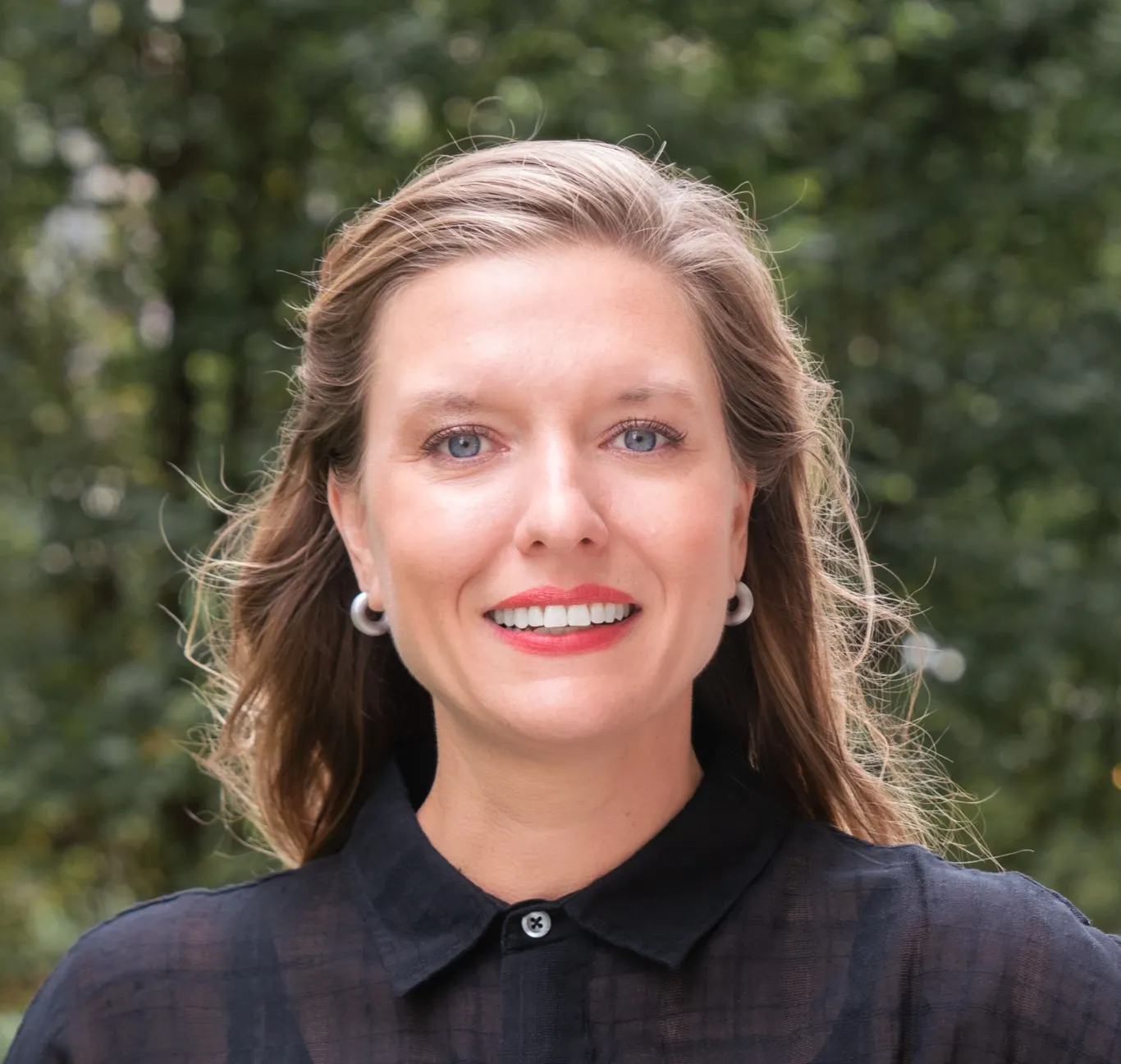
Through the Tulane School of Architecture we collected all of that work and built an exhibition. We eventually then built a website repository and it grew into this larger project, “Project New Orleans,” where we hosted a symposium with thought leaders on planning post-Katrina in New Orleans. We eventually turned that into a book where we published a selection of writings on the topic of post-Katrina planning and reconstruction.
So, in 2011 I moved up to New York to help finish that publication. And then a year later was Superstorm Sandy here in New York. So it really became this throughline of how do we share those lessons learned for people dealing with it in real time in New York?
You recently spoke on a panel for the New York chapter of Professional Women in Construction. What should people know about that event and discussions like it?
I'm so excited that the chapter pulled this panel together. And I love the idea that they're allowing their local members of the design and construction industry to access information from an interdisciplinary panel, with people from a real estate perspective or a land use law perspective, or a finance perspective. For me, my perspective is on delivery and public works.
The work that we need to do to get to the future of New York City is inherently interdisciplinary. We all have to be able to speak each other's language. We need to be able to translate for each other and find that shared accountability and common ground that is fundamental to starting these complex projects.
So, we were having a conversation around what's the work that's happening right now? What's going well? What needs to change and evolve? That as well as what's coming and how we work together towards those projects is really exciting.
What does it mean to you to be a “woman in construction?” Have you seen the industry change or evolve?
It's so important that we continue to focus on inclusion and high performance in our teams from every perspective. I think that the more inclusive that we are on our teams, the better quality work we're doing and the more public impact it will have.
One of the things that's been really exciting about getting to know the Jacobs New York team is how much strength there is in their female leadership locally. So, I think that we're seeing more and more commitment to inclusion, and that percolates to hiring practices.
One thing I want to add to that is that there continue to be challenges with ensuring that the way people talk about inclusion is embedded in the work itself. So what I mean by that is, and this has just always been a pet peeve of mine, when people talk about, “Mr. Contractor” or “His change order” or “His contract says.” There tends to be a focus on bias and training, but I would love to, in the future, see more of an emphasis on the way that people talk and communicate at the leadership level.
What advice do you have for women pursuing construction?
Find things that you're excited about and go work on them. Sometimes you have a mentor or a professor that is working on something cool and you want to go be a part of. Sometimes it’s finding companies that are doing work that feels like-minded or city agencies that are doing work you're excited about.
But at the core, design and construction requires a lot of internal motivation because you're solving problems all day, every day. And even if there are problems that look a little like ones you've solved before, you continue to encounter new challenges. I think finding the things that internally drive you to stay excited and motivated about that work are the North Star.



